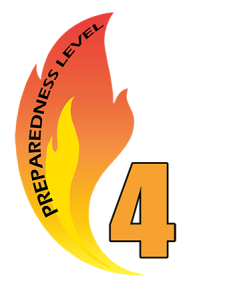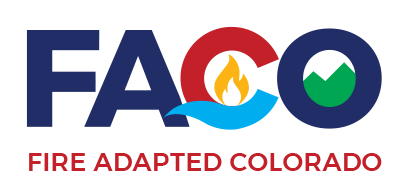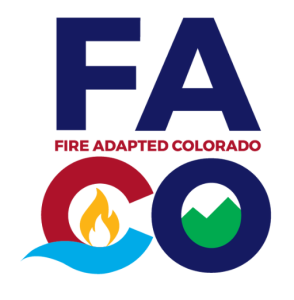The 4R’s of Live Wildfire Ready
 A glance at the NIFC (pronounced niff-c), National Fire News webpage, and I noticed the drop to National Preparedness Level 4. That’s good news, despite Idaho, Oregon, Montana, Wyoming and Washington, all currently reporting large fires.
A glance at the NIFC (pronounced niff-c), National Fire News webpage, and I noticed the drop to National Preparedness Level 4. That’s good news, despite Idaho, Oregon, Montana, Wyoming and Washington, all currently reporting large fires.
The NIFC site reports “As of this morning, 48 large active wildfires are being managed with full suppression strategies nationwide, and it’s almost Labor Day weekend. Current wildfires have burned 2,103,454 acres. About 17,000 wildland firefighters and support personnel are assigned to wildfires, including 18 complex and one Type 1 incident management teams, 401 crews, 658 engines, 97 helicopters, and one Modular Airborne Fire Fighting System (MAFFS).”
Evacuation orders are in effect on seven fires. Sixty fireline management personnel from Australia and New Zealand are also assigned to support large fires in the Northwest Area. The support from Australia and New Zealand is much appreciated.
In Colorado, we’ve seen some wet weather and cooler temps, a welcome relief from one month ago, when the 9,668-acre Alexander Mountain Fire torched off, destroying 26 homes and damaging four others. At least 21 outbuildings were also destroyed. Gov. Jared Polis declared a disaster for the Alexander Mountain fire and other fires burning across the state.
Notable Colorado Fires late last month included the Currant Creek Fire NE of Cedaredge, the Bucktail Fire near Nucla, the Quarry Fire in Jefferson County, and the 1,500-acre Stone Canon Fire which killed one person and destroyed at least five structures.
 The National Significant Wildland Fire Potential Outlook for September is normal for Colorado, with an update to be issued on September 1st. What a great opportunity to take advantage of the cooler temperatures to act on 5 tips to Reduce Your Wildfire Risk, around your home and property. The Home Ignition Zone Checklists is another valuable tool, along with your lawnmower, weed trimmer and rake. Preparing Homes for Wildfire is never a one-and-done.
The National Significant Wildland Fire Potential Outlook for September is normal for Colorado, with an update to be issued on September 1st. What a great opportunity to take advantage of the cooler temperatures to act on 5 tips to Reduce Your Wildfire Risk, around your home and property. The Home Ignition Zone Checklists is another valuable tool, along with your lawnmower, weed trimmer and rake. Preparing Homes for Wildfire is never a one-and-done.
During the August FACO network call, we were fortunate to have Dr. Cat Edgeley present on Navigating wildfire smoke damage: Insights from the 2021 Marshall Fire. Living with and mitigating the effects of wildfire smoke are important aspects of the Live Wildfire Ready strategy. What makes the Edgeley presentation unique, are the insights when returning to your home after a wildfire, and considerations before returning home.
Katie Lighthall, Western Region, Wildland Fire Leadership Council, also has a recent blog post entitled Learning to Live with Wildland Fire – A Cohesive Strategy Story from Oregon. It emphasizes the importance of clear communications and the paradigm of “full suppression strategies” when resources may not be available, due to increased fire activity nationwide.
In her post, Jason Loomis, the Incident Commander on the Lone Rock Fire said “the strategy for this fire is recorded as “full suppression” but at PL 5, that simply does not mean what many think it does. We just don’t have enough resources to ensure full suppression, so we do what we can, and that is protect critical values at risk, but that means there are no boots or a string of dozers on the perimeter of the fire.”
Loomis goes on the say that “It’s critical that we are transparent and tell the whole story, conveying the truth about what we can do with the resources we have. It’s important for the public, our state and federal agency administrators, and our elected officials to understand what it means to live with wildland fire.
It’s worth taking a moment and thinking through how we can improve the communications that we have with our intended audiences, how we can better engage our elected officials, and how we continue to lead the mitigation call to action, while not increasing the collective stress and anxiety of the public, or one another, when smoke is in the air.
Let’s continue to lead by being proactive, and not reactive. Let’s be open to the hard conversations and choose our words wisely. Let’s diverge from chatter about Zombie Fires and Burn Scars and discuss the National Cohesive Strategy, the benefits of Fire Footprints, and the importance of Prescribed and low-intensity fire on the landscape. Your Home Can Survive a Wildfire, let’s educate and mitigate, before it’s too late.
 As we all head out for the long holiday weekend and hopefully have an opportunity to decompress and get ourselves READY, let’s keep in mind those 17,000, er 34,000 boots on the ground, who are still on assignment and away from their families.
As we all head out for the long holiday weekend and hopefully have an opportunity to decompress and get ourselves READY, let’s keep in mind those 17,000, er 34,000 boots on the ground, who are still on assignment and away from their families.
Let’s work together to get the right information to the right people at the right time, so that they can make the right decisions. As Coloradans, we must Live Wildfire Ready all year long. It’s a message that we can share with colleagues and our communities, (and the LWR campaign also happens to have some cool new swag and a swanky new advertisement to share with your LWR audiences).

